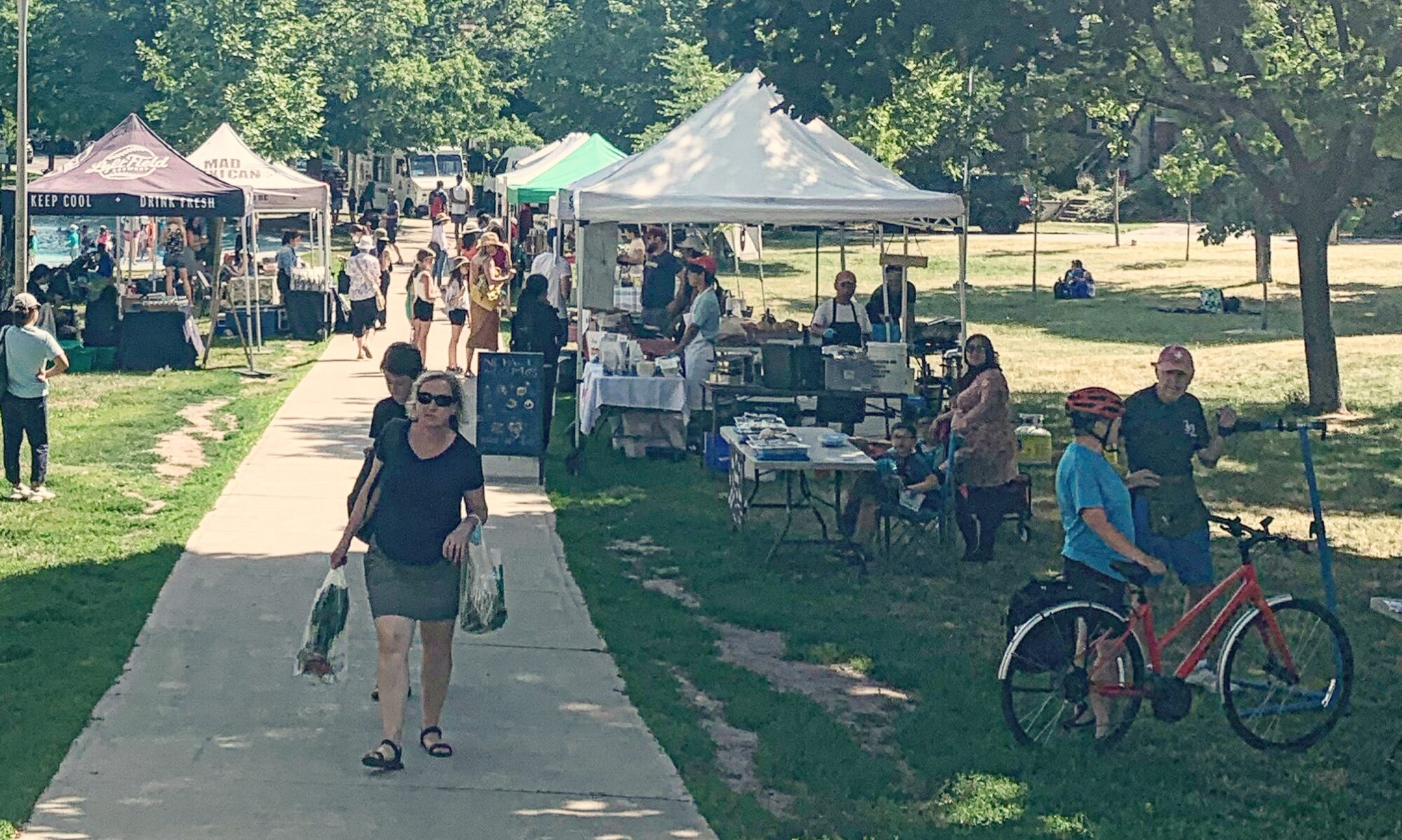Here is the second post in the series of Ten Questions for DECA Board members spearheaded by DECA volunteer Heather Bean. She posed ten questions to each of our board members to learn a little bit about where they come from, who they are, and what their dreams are for our neighbourhood. Meet DECA’s former treasurer, Lorraine Cheng and our local history expert and Jane’s Walk leader, Stephen Wickens.
Ten Questions for . . . Lorraine Cheng
How long have you been living in the neighbourhood?
I have been living in the neighbourhood since 2007.
Where did you grow up?
I grew up in Hong Kong.
How do you spend your Saturday mornings?
Saturday mornings I have coffee, share a plate of fruit with my husband and read the Saturday newspaper at home.
What’s your favourite thing to buy at the Farmer’s Market, and what do you do with it?
Corn: steam it, put on butter, salt and pepper. Yum yum.
How did you get involved with DECA?
In 2008 I was at the market and signed up to be a member at large. From 2011 to 2013 I took on the role of treasurer.
Do you have a dream DECA project?
Too many! I would like to bring in more restaurants in our community.
Which business on the Danforth sees you the most–and what brings you there?
The fruit and veggie store—Kelly Food Market.
If you could open (or persuade someone else to open) a business on the Danforth, what would it be?
A bookstore with a little cafe.
If you could change one thing about the neighbourhood, what would it be?
Get rid of all the nail salons.
When you tell other people about our neighbourhood, what do you say?
We are changing.
Ten Questions for . . . Stephen Wickens
How long have you been living in the neighbourhood?
My wife and I moved into DECA territory in January 2002, and clearly the timing was excellent.
Where did you grow up?
In the Beach neighbourhood, just a few doors up from the lake. From that vantage point, the Danforth seemed like an exotic, real-world place. I was quite excited when the subway opened in 1966. I remember going to see a few movies at the Prince of Wales theatre (now Valu–mart), and in the late 1960s, John’s Hobby Shop and, of course, Stan Lane’s Cycle and Sports (which I think was where the Home Hardware is now). Stan’s was the first store I knew of where you could buy curved hockey sticks.
How do you spend your Saturday mornings?
No set pattern, though it’s often reading the longer feature stories in the papers.
How did you get involved with DECA?
I was kicking myself for not being in DECA from day one. I had been involved in two previous attempts to start a neighbourhood association, but they went nowhere. When I heard that a group was up and going, I was eager to join.
Do you have a dream DECA project?
We’re working on it. Though only in its nascent stages, the visioning project should be a bottom-up consultation process aimed at generating a broad understanding of our neighbourhood economy. Armed with that, through DECA, residents should be able to contribute wisely and credibly to city planning policy discussions and debates over development proposals or empty storefronts. It’s all about generating diversity and vibrancy.
Which business on the Danforth sees you the most–and what brings you there?
Most of the bread in our house comes from Celena’s. I go to Moberly Natural Foods and The Twelfth Fret. I love the chicken wings at TKO’s, but don’t get to eat them enough. I do my banking at the Woodbine RBC. Because we’re in DECA’s wild west, I’m often on the strip over to Greenwood. Local Supermarket has the best mangoes and the Linsmore has had some really fun bands in recent months. I go east of DECA turf when I have that fish and chip hankering: You can’t beat Duckworth’s at Main.
If you could open (or persuade someone else to open) a business on the Danforth, what would it be?
A really good supermarket. We do most of our grocery shopping at the Coxwell No Frills, but….
If you could change one thing about the neighbourhood, what would it be?
As Jane Jacobs pointed out in The Death and Life of Great American Cities, we need to get lots of people on our sidewalks at different times of day, and for different reasons. She argued that a key and often overlooked factor in the decades of decline neighbourhoods such as ours experienced during the 1970s, ’80s and ’90s was that we lost employment. It’s not that we’ll get the factories back, nor would many locals stand for the inconveniences of industrial neighbours but, again as Jacobs pointed out, office jobs fit wonderfully into residential areas around subway stations, as long as it’s all within a human/pedestrian scale. We need to become the model for the city’s mid-rise avenues plan. So, along with the residential density we’ll inevitably get in the coming years, we need to rejuvenate the mix of primary uses in the neighbourhood, mostly by getting people to come here during the daytime when so many of us are working in other ’hoods. A healthy time-spread of local foot traffic makes it so much easier for secondary-use businesses — local stores and restaurants — to thrive.
When you tell other people about our neighbourhood, what do you say?
There aren’t many prewar neighbourhoods that are still very much on the rise. But this is one. I also tell folks they should join me for the Jane’s Walk I lead each May.



